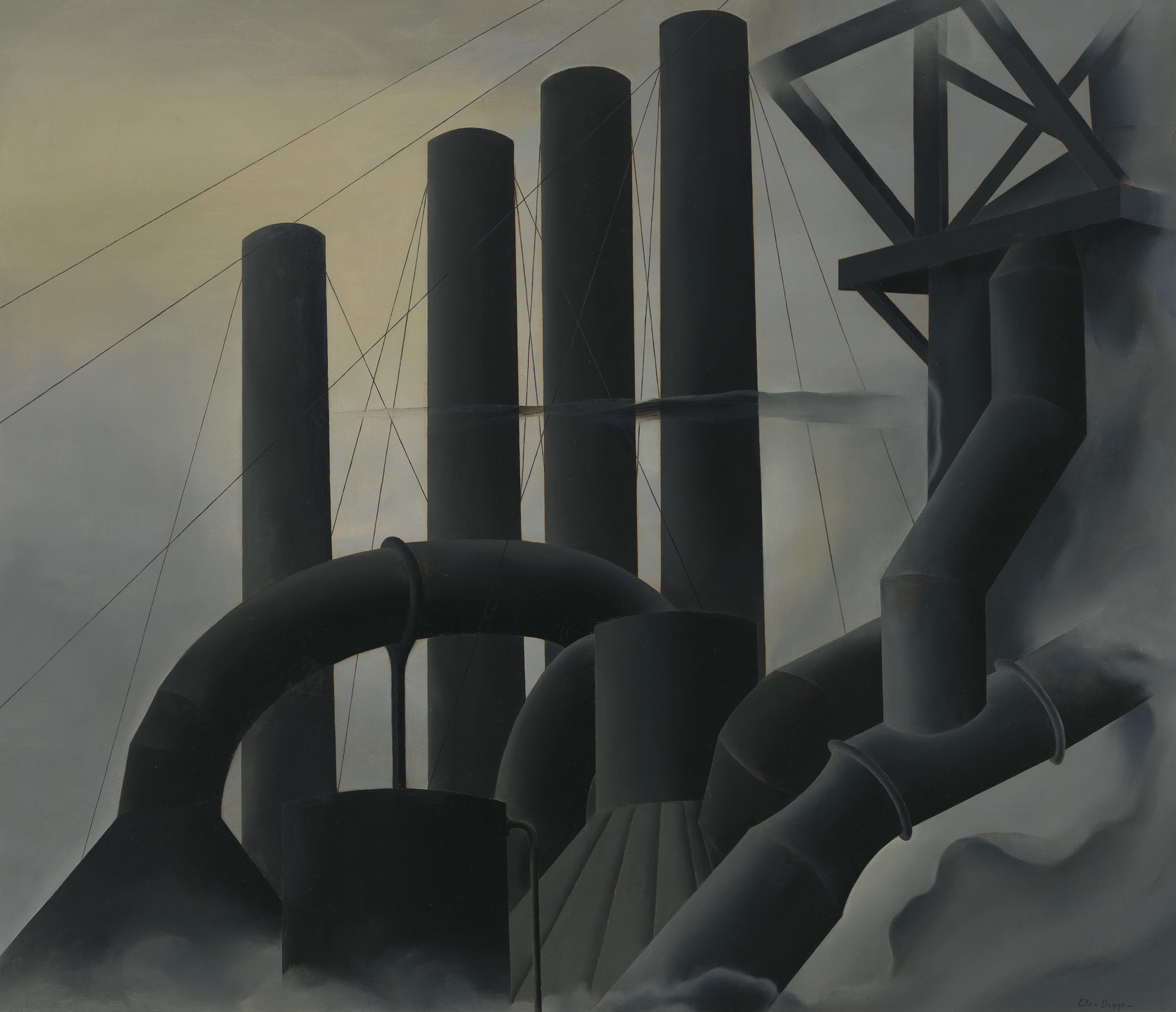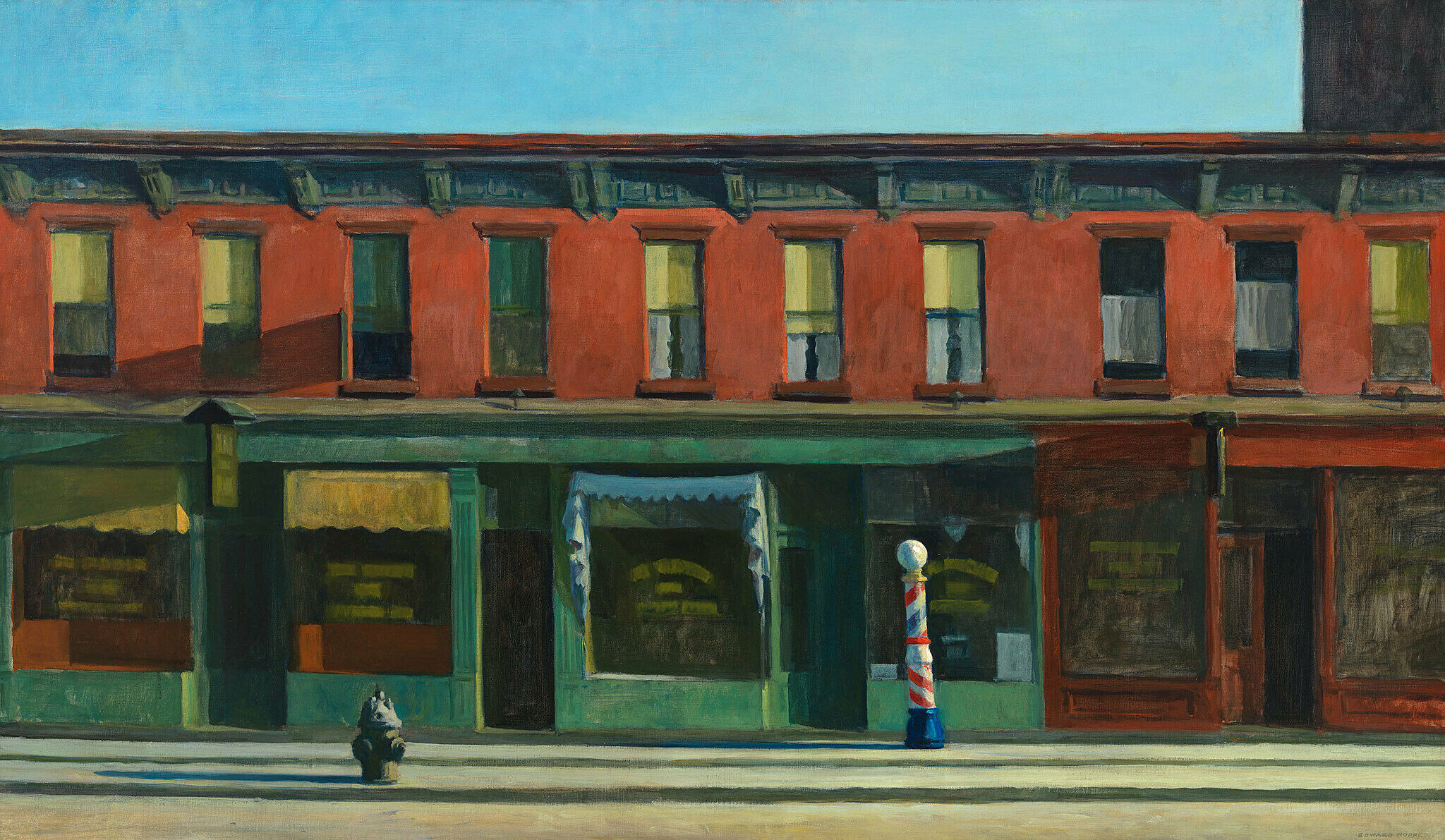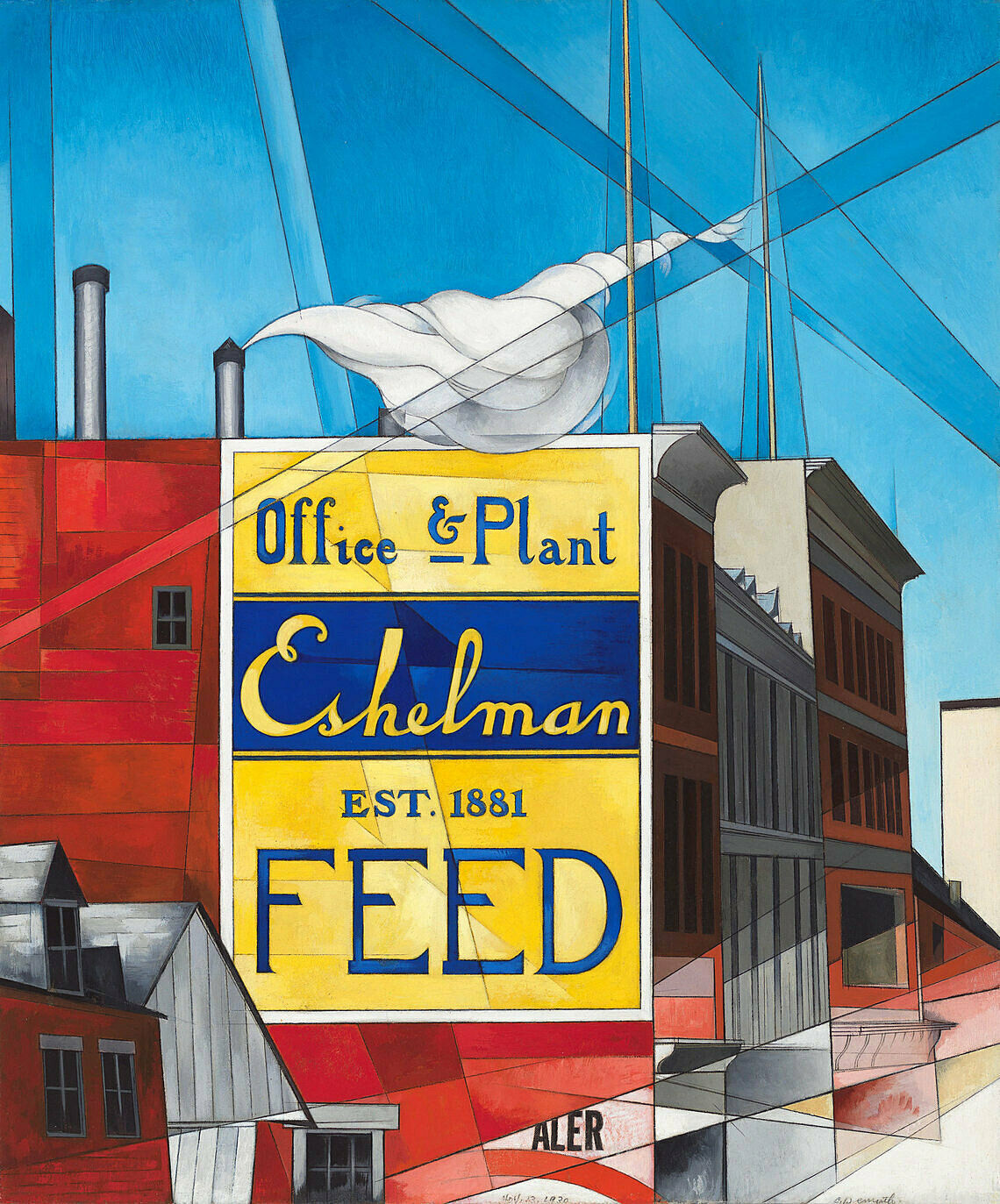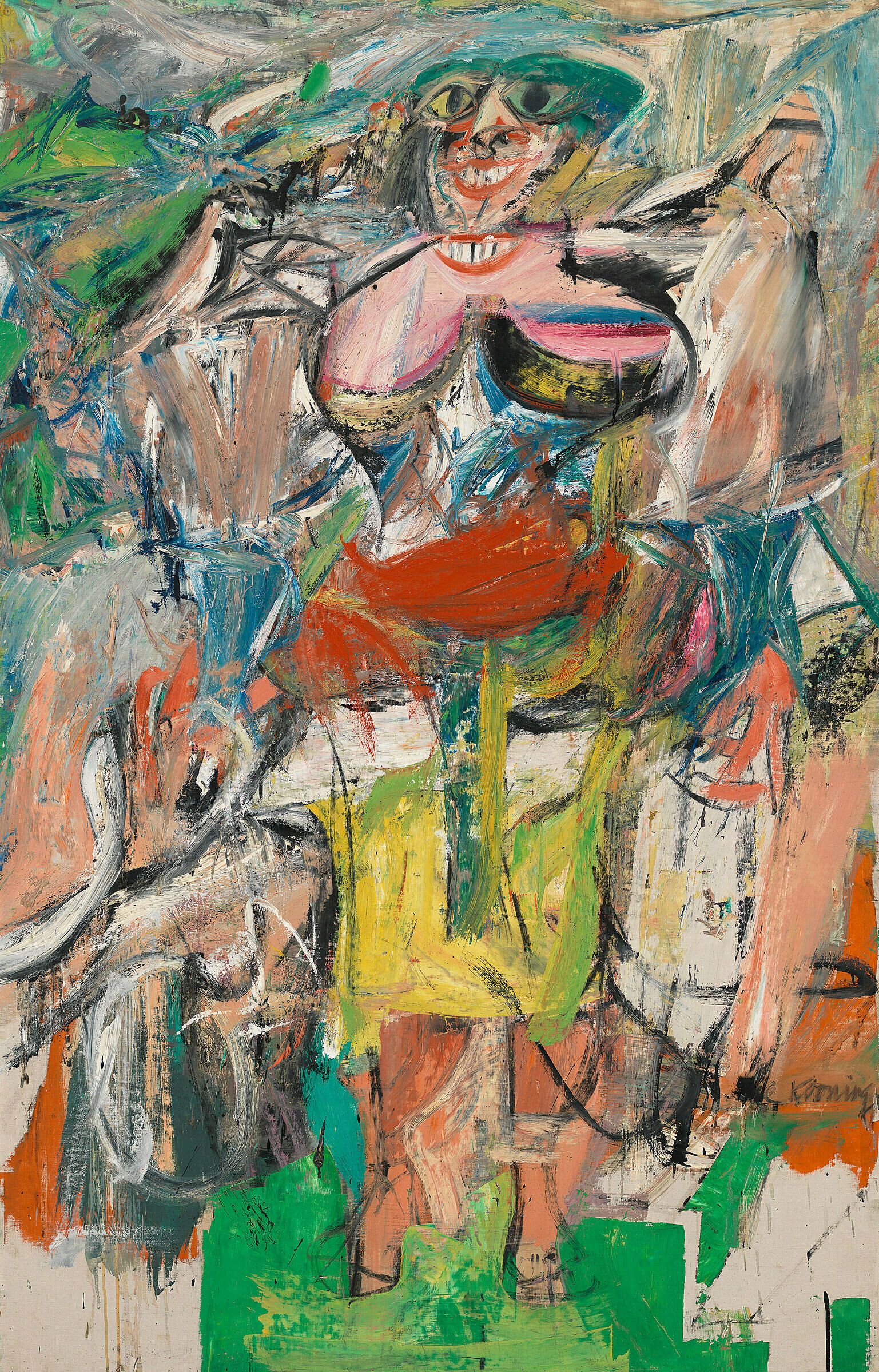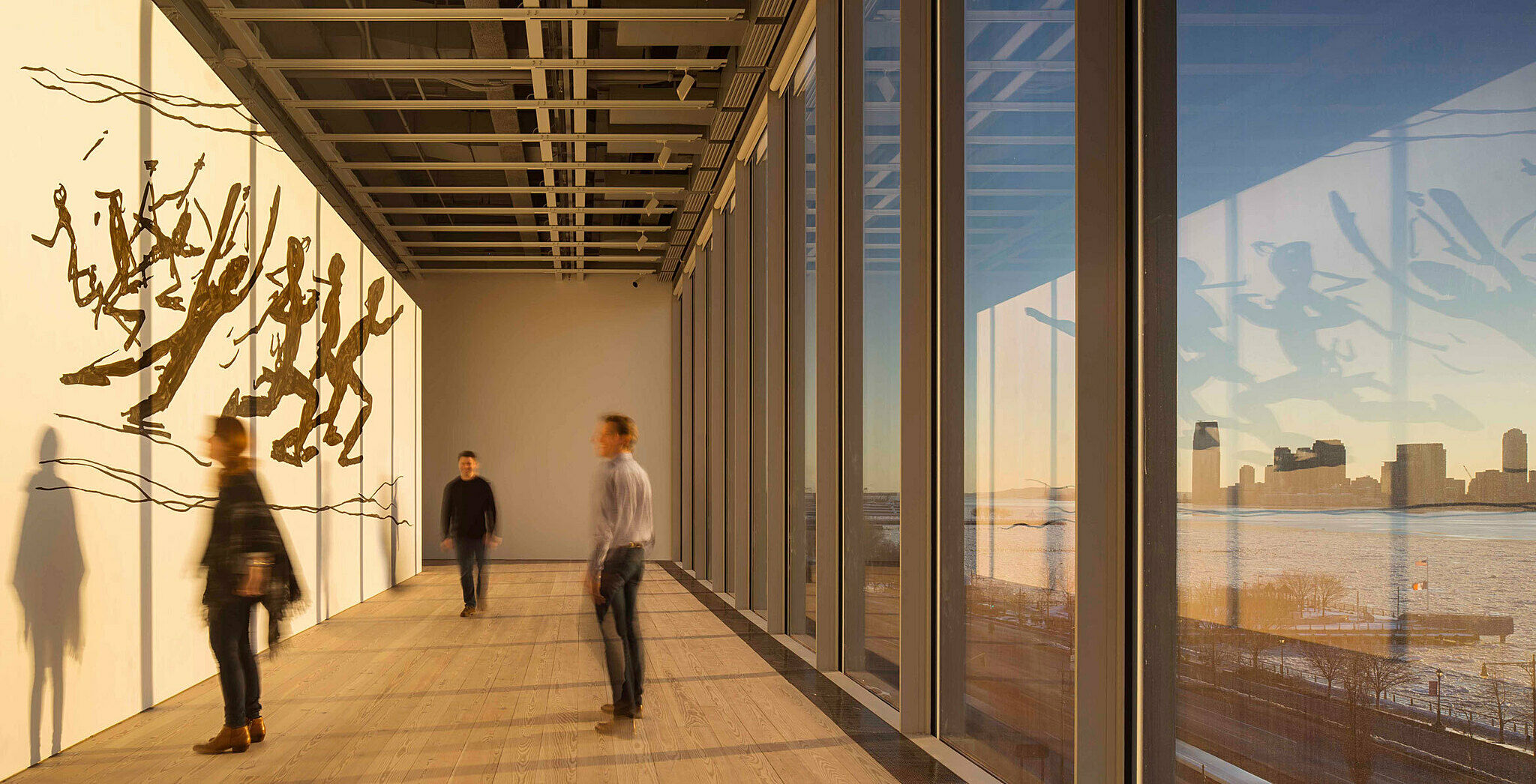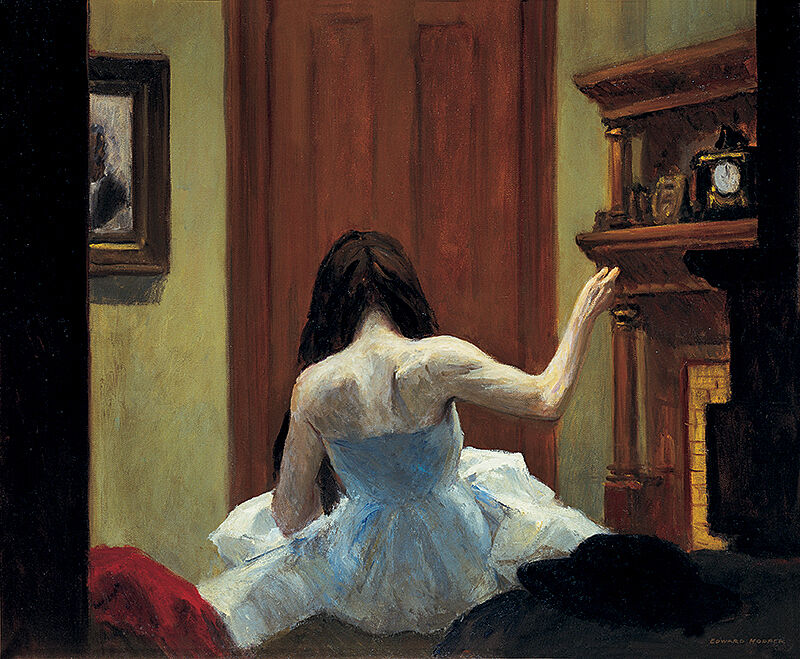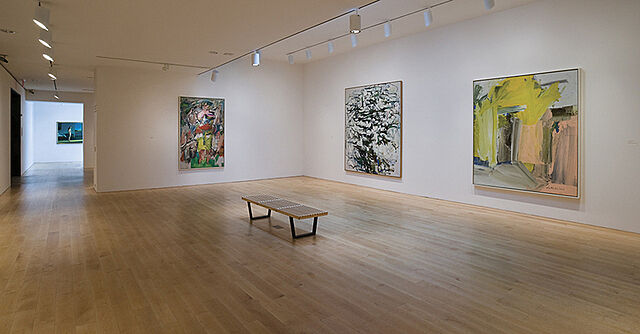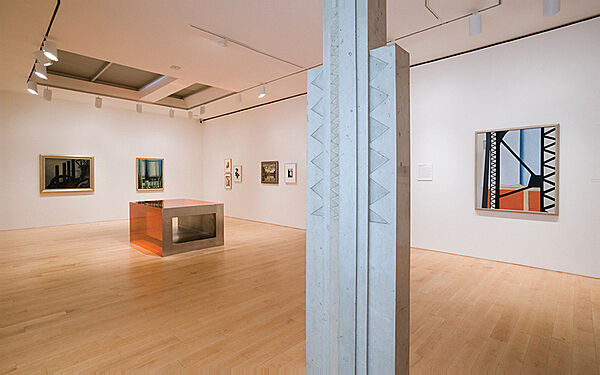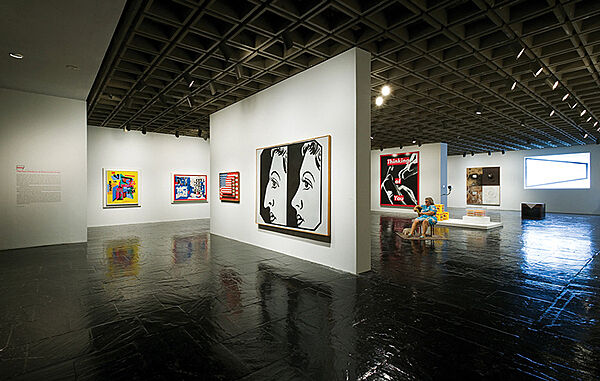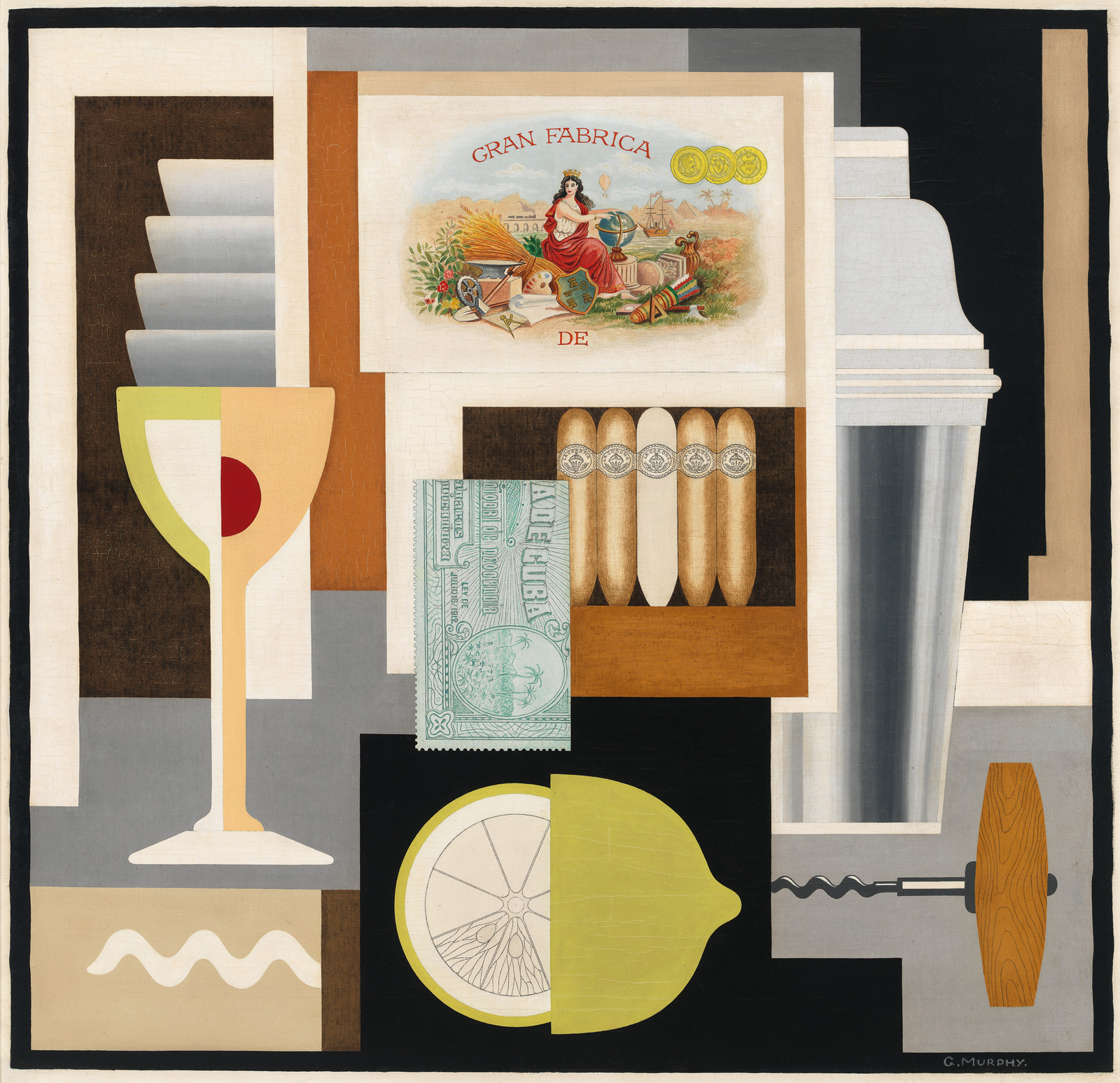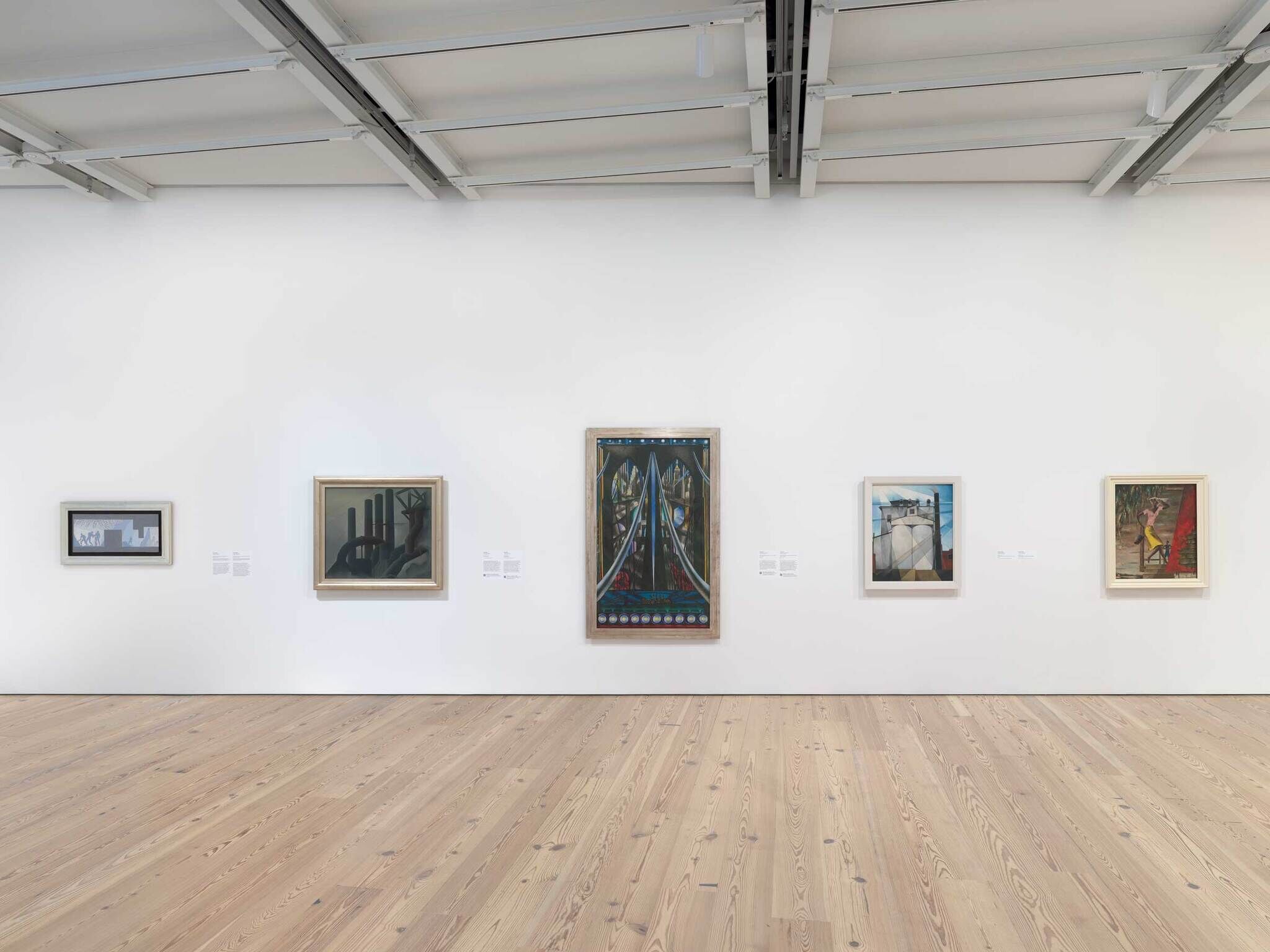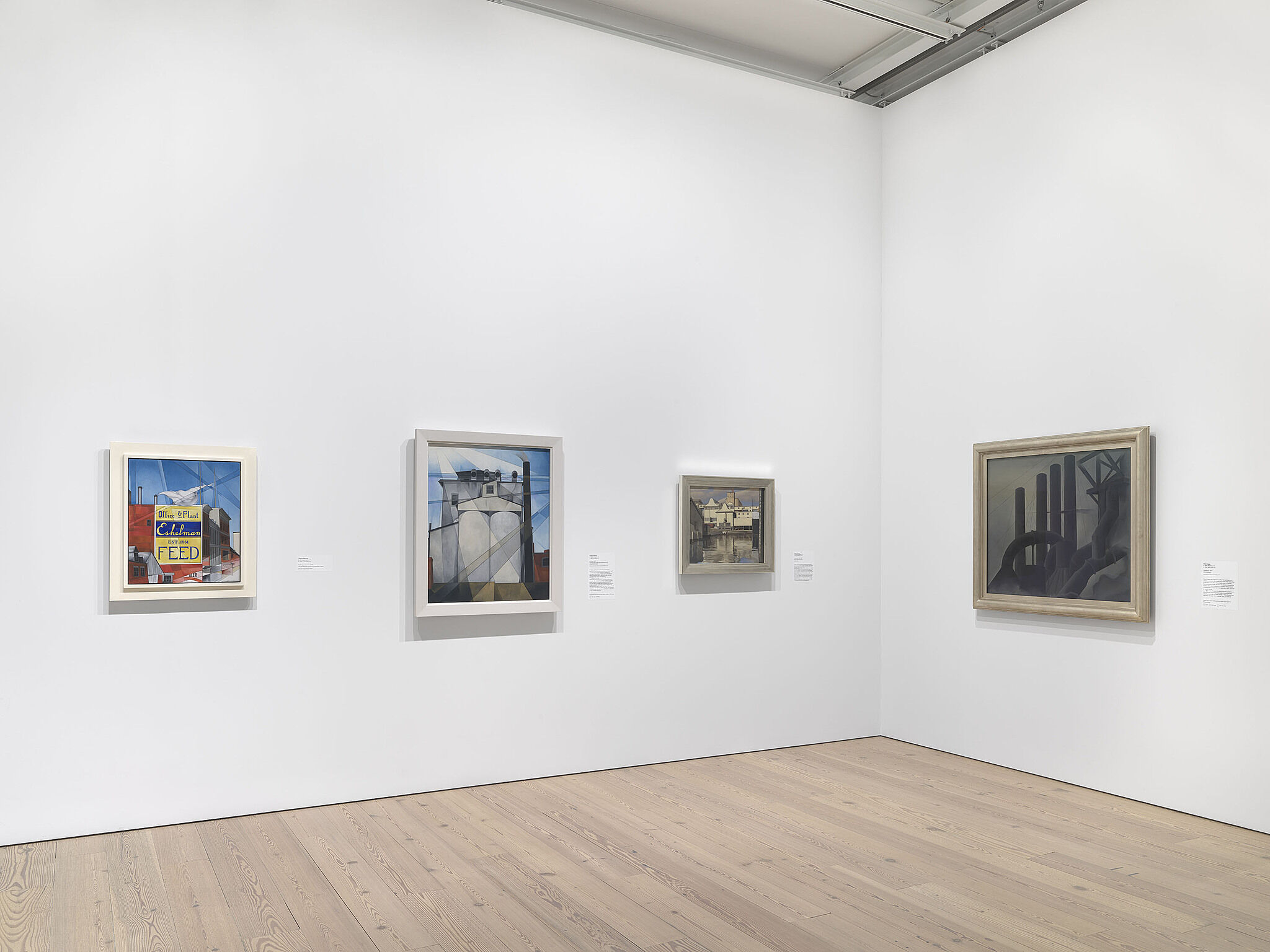Pittsburgh was inspired by a view from a train window that Elsie Driggs saw as a child, riding past the city’s steel mills at night. Years later, remembering how the spewing smokestacks tinted the nocturnal sky with sulfurous hues, she returned to Pittsburgh to make studies for a painting. She discovered, however, that the production of steel had changed over the years and the mill was using a new process that no longer discharged smoke into the sky. She sketched the buildings anyway and returned to her studio to paint Pittsburgh with a palette of greys. Driggs exhibited the painting in New York, where her gallery declared it an exemplar of a “new classicism,” and she herself called Pittsburgh her "Piero della Francesca" in honor of the fifteenth-century painter, who inspired her with his "desire for structure and order, simplicity and strength." Pittsburgh may be a devotional image for a twentieth-century faith, but the monolithic gray smokestacks rising above the haze seem inescapably dark and menacing, suggesting that Driggs may have been questioning America’s newfound faith in technology.

